Zenghui Sun
REVISION:Reflective Intent Mining and Online Reasoning Auxiliary for E-commerce Visual Search System Optimization
Oct 26, 2025Abstract:In Taobao e-commerce visual search, user behavior analysis reveals a large proportion of no-click requests, suggesting diverse and implicit user intents. These intents are expressed in various forms and are difficult to mine and discover, thereby leading to the limited adaptability and lag in platform strategies. This greatly restricts users' ability to express diverse intents and hinders the scalability of the visual search system. This mismatch between user implicit intent expression and system response defines the User-SearchSys Intent Discrepancy. To alleviate the issue, we propose a novel framework REVISION. This framework integrates offline reasoning mining with online decision-making and execution, enabling adaptive strategies to solve implicit user demands. In the offline stage, we construct a periodic pipeline to mine discrepancies from historical no-click requests. Leveraging large models, we analyze implicit intent factors and infer optimal suggestions by jointly reasoning over query and product metadata. These inferred suggestions serve as actionable insights for refining platform strategies. In the online stage, REVISION-R1-3B, trained on the curated offline data, performs holistic analysis over query images and associated historical products to generate optimization plans and adaptively schedule strategies across the search pipeline. Our framework offers a streamlined paradigm for integrating large models with traditional search systems, enabling end-to-end intelligent optimization across information aggregation and user interaction. Experimental results demonstrate that our approach improves the efficiency of implicit intent mining from large-scale search logs and significantly reduces the no-click rate.
A Multi-Object Rectified Attention Network for Scene Text Recognition
Jan 10, 2019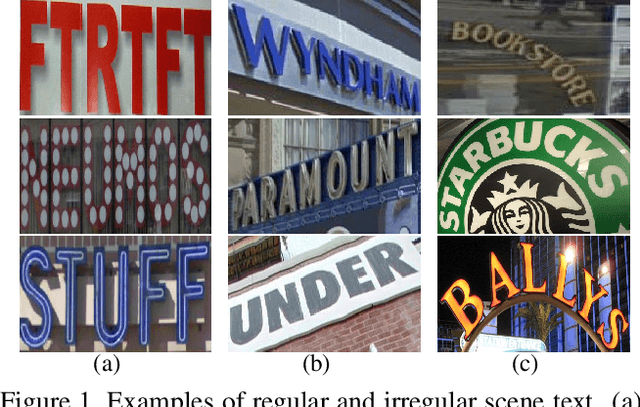


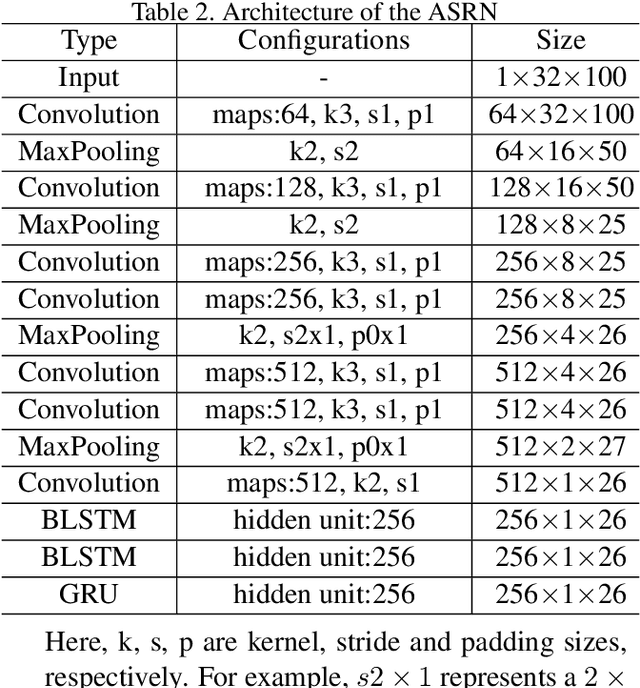
Abstract:Irregular text is widely used. However, it is considerably difficult to recognize because of its various shapes and distorted patterns. In this paper, we thus propose a multi-object rectified attention network (MORAN) for general scene text recognition. The MORAN consists of a multi-object rectification network and an attention-based sequence recognition network. The multi-object rectification network is designed for rectifying images that contain irregular text. It decreases the difficulty of recognition and enables the attention-based sequence recognition network to more easily read irregular text. It is trained in a weak supervision way, thus requiring only images and corresponding text labels. The attention-based sequence recognition network focuses on target characters and sequentially outputs the predictions. Moreover, to improve the sensitivity of the attention-based sequence recognition network, a fractional pickup method is proposed for an attention-based decoder in the training phase. With the rectification mechanism, the MORAN can read both regular and irregular scene text. Extensive experiments on various benchmarks are conducted, which show that the MORAN achieves state-of-the-art performance. The source code is available.
Learning Spatial-Semantic Context with Fully Convolutional Recurrent Network for Online Handwritten Chinese Text Recognition
May 25, 2017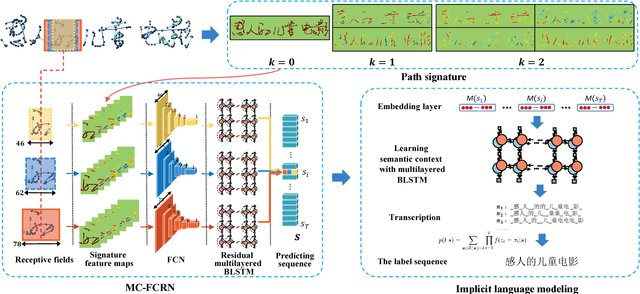
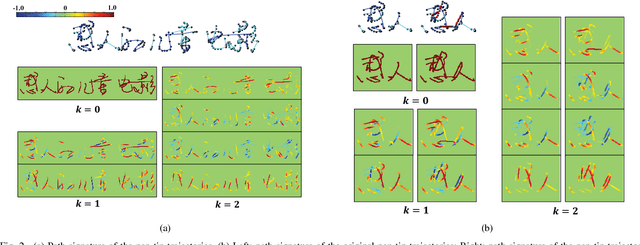
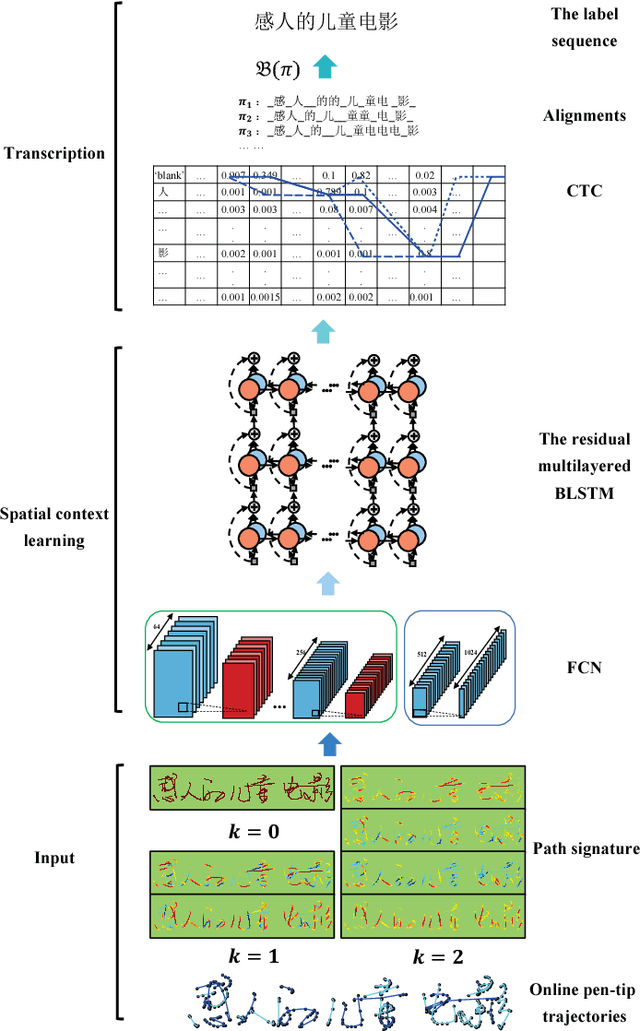
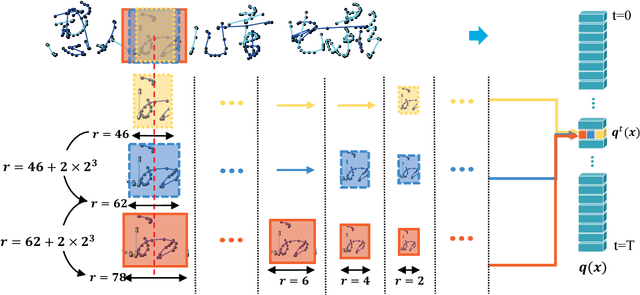
Abstract:Online handwritten Chinese text recognition (OHCTR) is a challenging problem as it involves a large-scale character set, ambiguous segmentation, and variable-length input sequences. In this paper, we exploit the outstanding capability of path signature to translate online pen-tip trajectories into informative signature feature maps using a sliding window-based method, successfully capturing the analytic and geometric properties of pen strokes with strong local invariance and robustness. A multi-spatial-context fully convolutional recurrent network (MCFCRN) is proposed to exploit the multiple spatial contexts from the signature feature maps and generate a prediction sequence while completely avoiding the difficult segmentation problem. Furthermore, an implicit language model is developed to make predictions based on semantic context within a predicting feature sequence, providing a new perspective for incorporating lexicon constraints and prior knowledge about a certain language in the recognition procedure. Experiments on two standard benchmarks, Dataset-CASIA and Dataset-ICDAR, yielded outstanding results, with correct rates of 97.10% and 97.15%, respectively, which are significantly better than the best result reported thus far in the literature.
Fully Convolutional Recurrent Network for Handwritten Chinese Text Recognition
Apr 18, 2016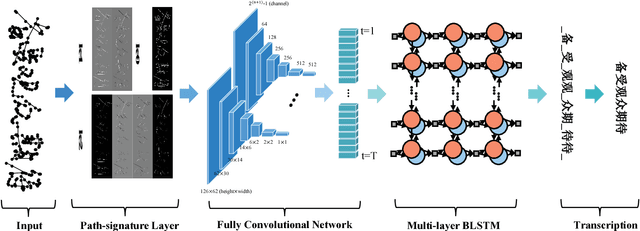
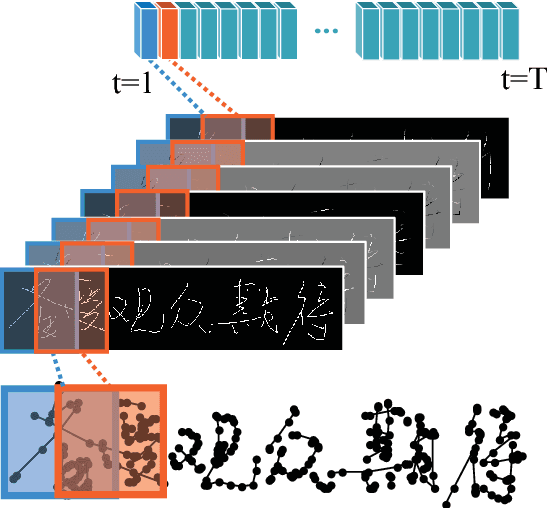
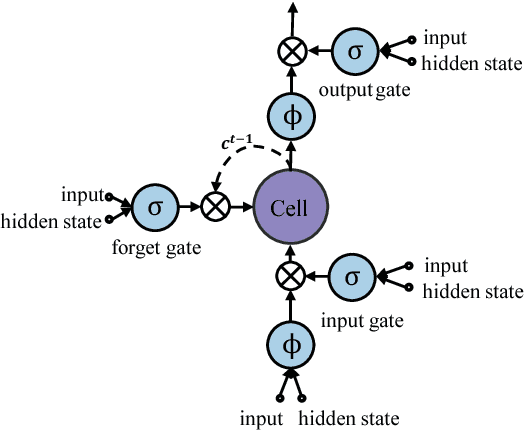
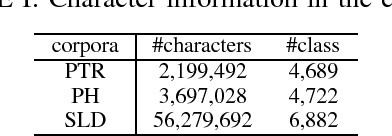
Abstract:This paper proposes an end-to-end framework, namely fully convolutional recurrent network (FCRN) for handwritten Chinese text recognition (HCTR). Unlike traditional methods that rely heavily on segmentation, our FCRN is trained with online text data directly and learns to associate the pen-tip trajectory with a sequence of characters. FCRN consists of four parts: a path-signature layer to extract signature features from the input pen-tip trajectory, a fully convolutional network to learn informative representation, a sequence modeling layer to make per-frame predictions on the input sequence and a transcription layer to translate the predictions into a label sequence. The FCRN is end-to-end trainable in contrast to conventional methods whose components are separately trained and tuned. We also present a refined beam search method that efficiently integrates the language model to decode the FCRN and significantly improve the recognition results. We evaluate the performance of the proposed method on the test sets from the databases CASIA-OLHWDB and ICDAR 2013 Chinese handwriting recognition competition, and both achieve state-of-the-art performance with correct rates of 96.40% and 95.00%, respectively.
 Add to Chrome
Add to Chrome Add to Firefox
Add to Firefox Add to Edge
Add to Edge